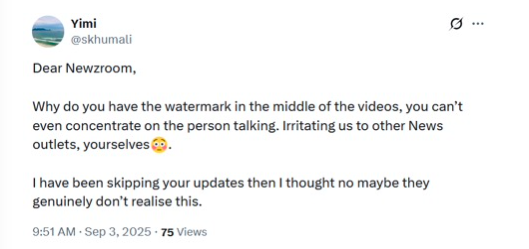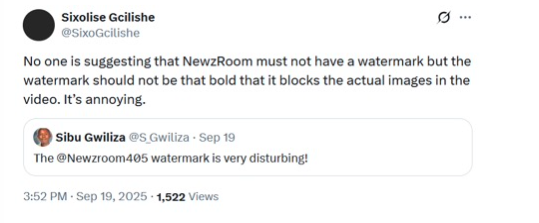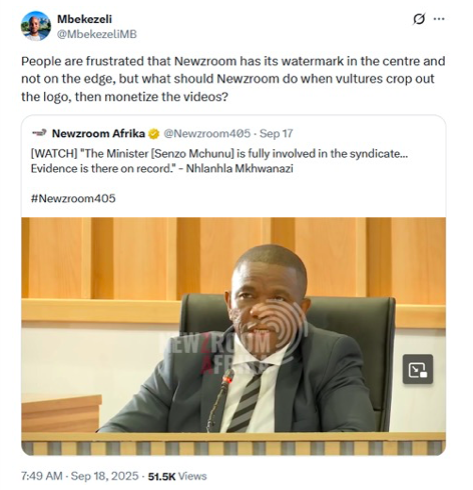A growing trend of social media accounts posting news clips in South Africa is drawing sharp criticism from online audiences. These content aggregators, often called ‘news mills’ and certain influencer-operated accounts appear to be posting the content of newsrooms as their own, often with little to no attribution, leading to a frustrating degradation of the viewer experience.
Instead of creating original content, news mills rely on posting existing news reports, videos and interviews from reputable sources like broadcasters or established journalists. The ultimate goal is usually to attract a high volume of traffic, views, and followers to earn online revenue, typically through advertising and affiliate links.
In numerous instances, which the Centre for Analytics and Behavioural Change (CABC) detected, these accounts are cropping out the logos of the newsrooms and passing the content off as their own.
The issue has become so pervasive that a major South African broadcaster has resorted to aggressive countermeasures. Newzroom Afrika has notably deployed watermarks that obscure the faces of interviewees.
This action, while intended to protect their copyright and intellectual property, is annoying the audiences the broadcaster is trying to serve.
The rise of the content plagiarists
Several high-profile social media accounts have been identified as frequent propagators of this repurposed news. These accounts frequently download and post clips of breaking news interviews and commentary, most likely using them to generate online revenue streams.
The practice of taking content without credit has created an environment where the original creators see their work exploited and diluted.
Media houses incur the cost of funding the journalists, editors, camera crew and production costs only to have pirate social media accounts reap the financial rewards of a product they never paid to produce. The plagiarists have no costs at all.
This represents a threat to the livelihood of journalists and news media in an already challenging and shrinking market.
The watermark backlash
Newzroom Afrika’s response – applying large, distracting watermarks – has been a direct reaction to content thieves cropping out the smaller, standard station logos. However, this has inadvertently impacted the legitimate online viewing experience.
Online users have taken to social media to express their annoyance, while simultaneously explaining why the broadcaster was forced to act.
Annoyed by the intrusive watermarks meant to stop plagiarism, frustrated online viewers are considering abandoning the content and taking their viewership to alternative, less visually distracting news sources.
One user posted on X: “Dear Newzroom, Why do you have the watermark in the middle of the videos, you can’t even concentrate on the person talking. Irritating us to other News outlets, yourselves 😳. I have been skipping your updates then I thought no maybe they genuinely don’t realise this.”

Another X user commented, “No one is suggesting that Newzroom must not have a watermark but the watermark should not be that bold that it blocks the actual images in the video. It’s annoying.”

Human Rights lawyer, Mbekezeli Benjamin, noted the necessity of the measure, posting, “People are frustrated that Newzroom has its watermark in the centre and not on the edge, but what should Newzroom do when vultures crop out the logo, then monetise the videos?”

Integrity and attribution at risk
The conflict is not just over revenue; it is a fundamental challenge to journalistic integrity. When content is stripped of its original source, the accountability and credibility of the reporting are lost.
Content is published and shared without traditional journalistic checks and are not subject to the press code. False or misleading information may be interspersed with credible content, where the work of journalists can then inadvertently lend credibility to misinformation.
As online platforms continue to evolve, the battle between original content creators and profit-driven aggregation and influencer accounts is escalating.
The result is an online landscape where news consumers are caught in the middle, forced to endure large, annoying watermarks as a defence mechanism against widespread content theft.
Kirsten Pearson is an author and Senior Researcher at the Centre for Analytics and Behavioural Change (CABC).














